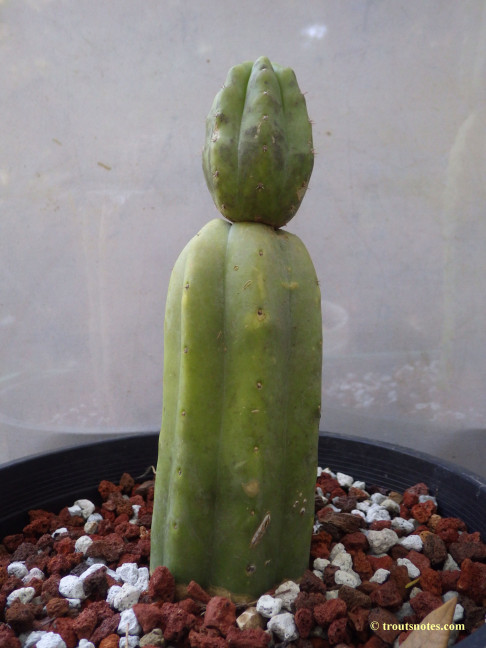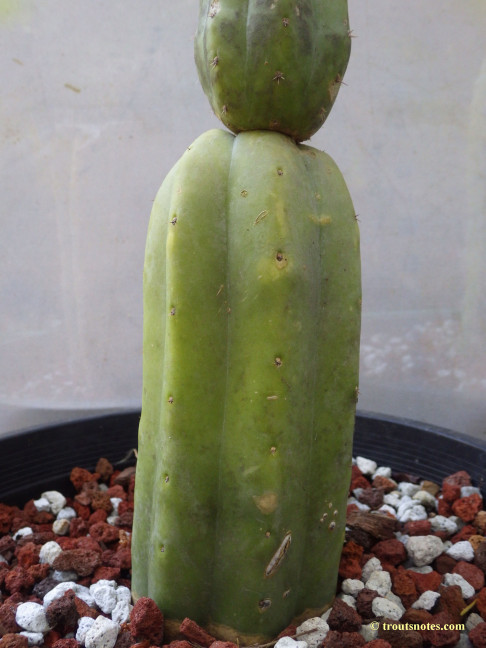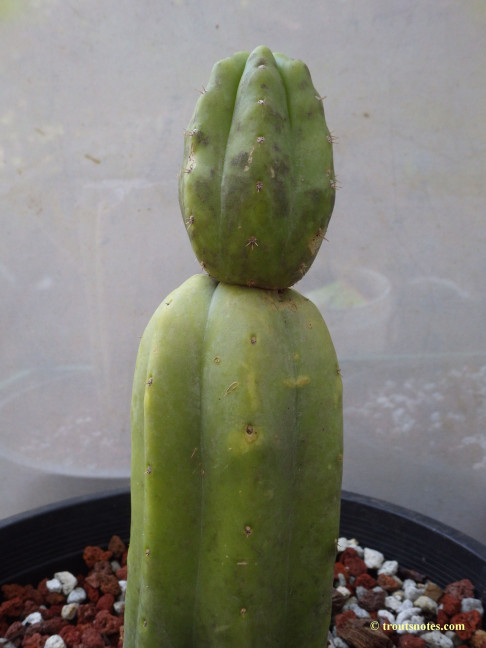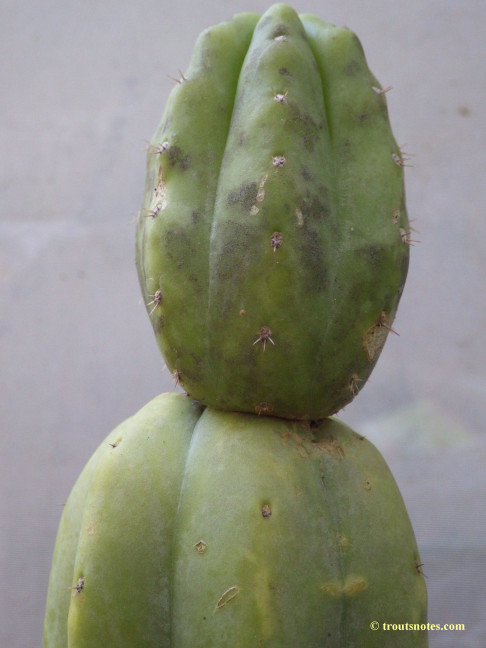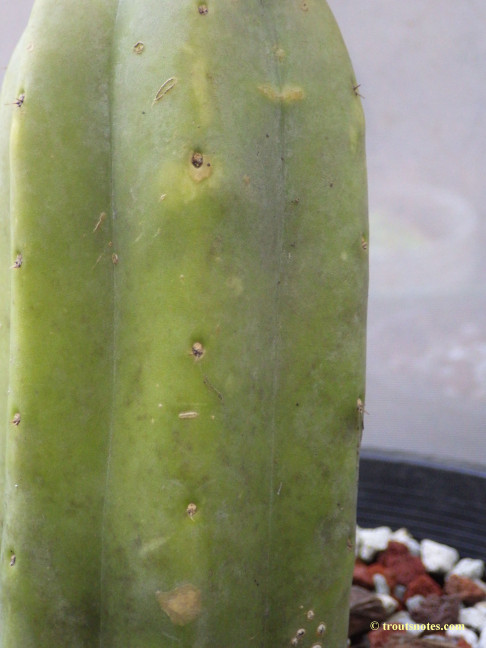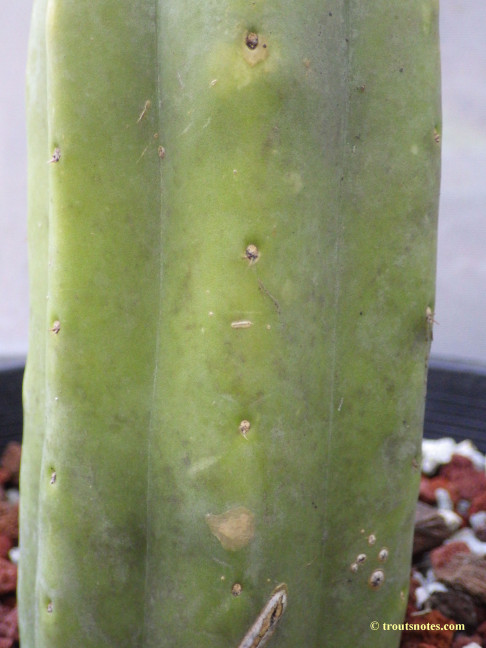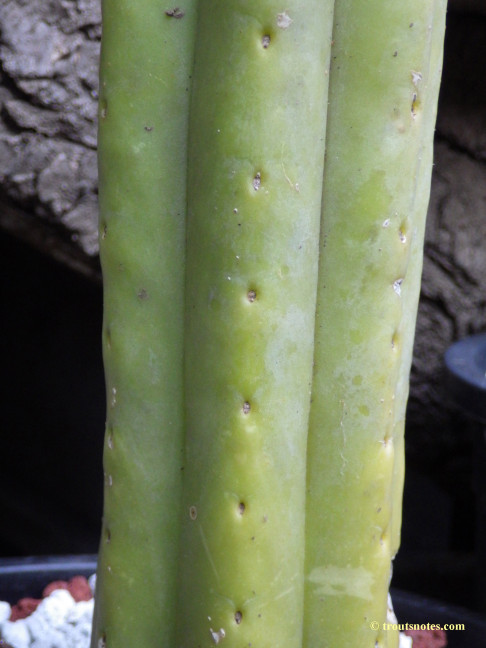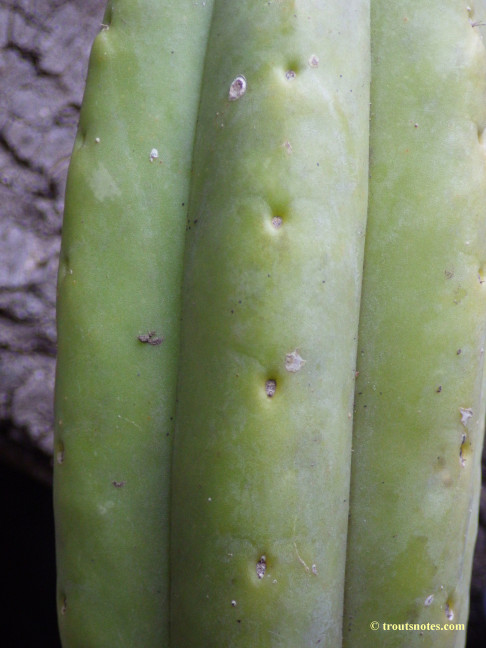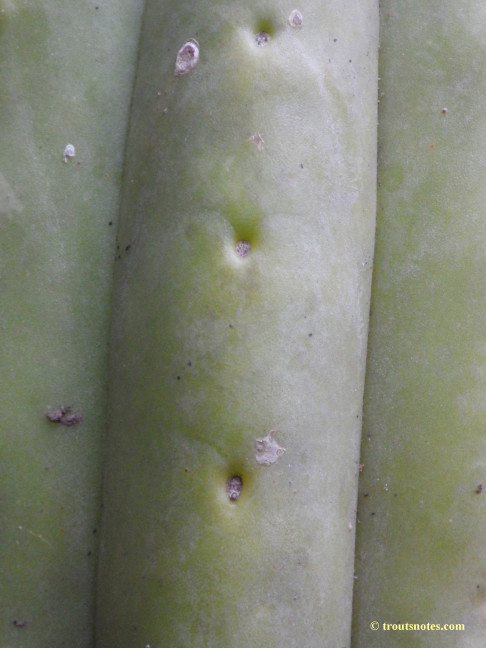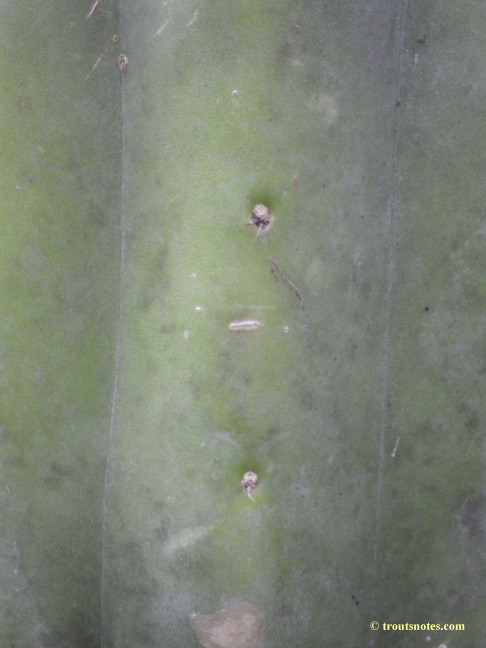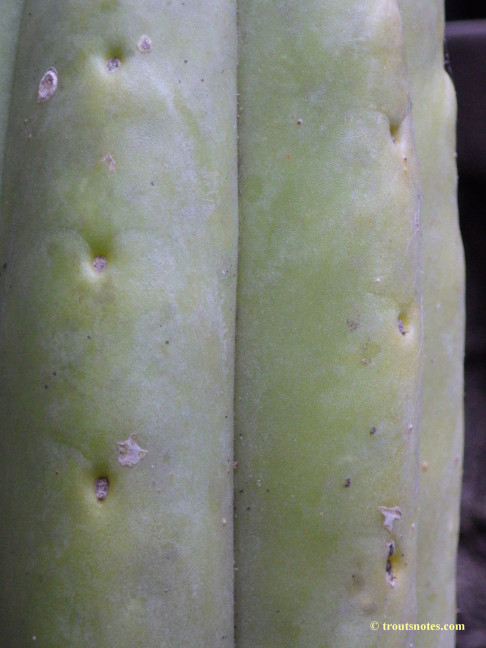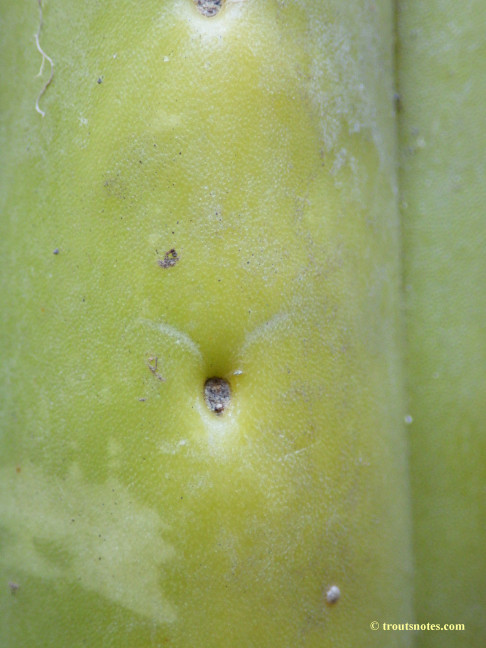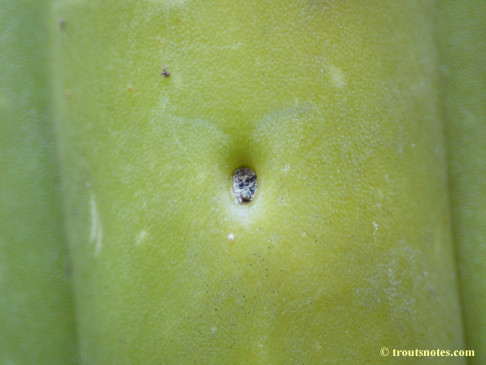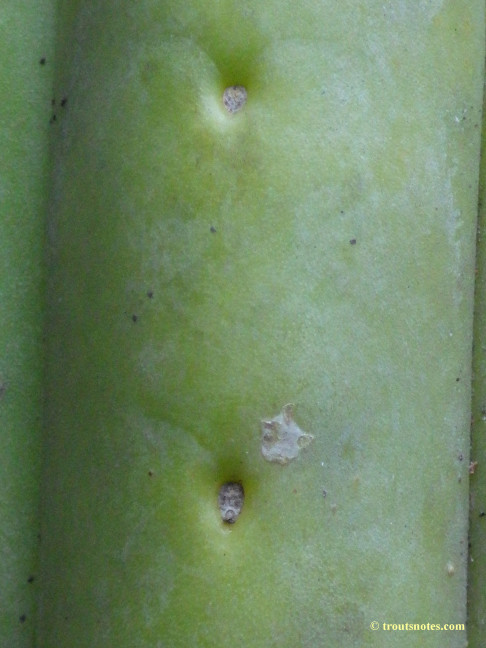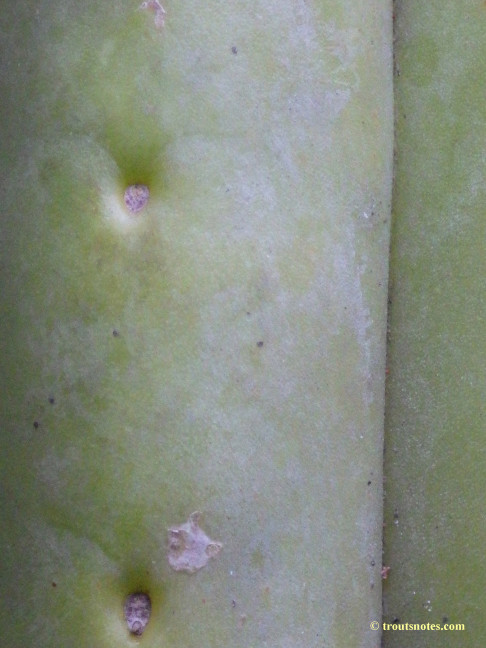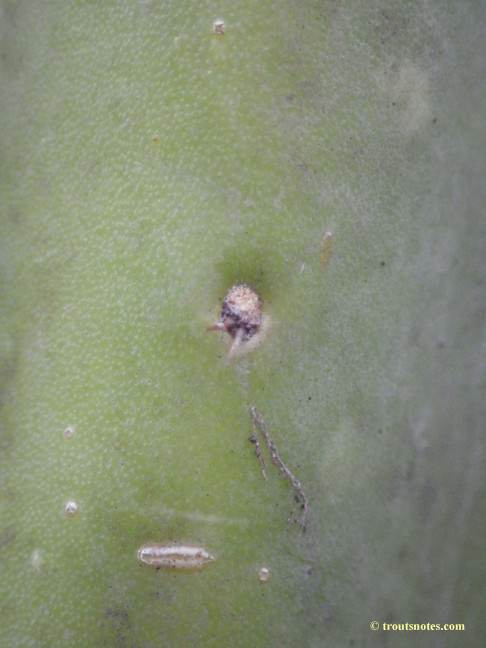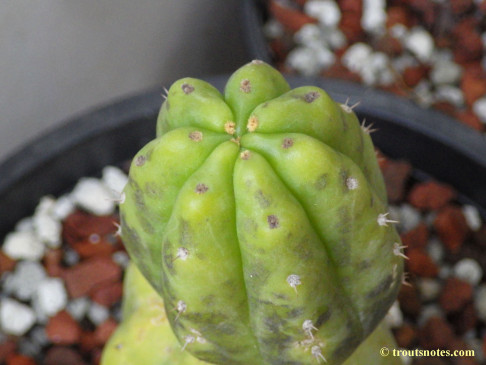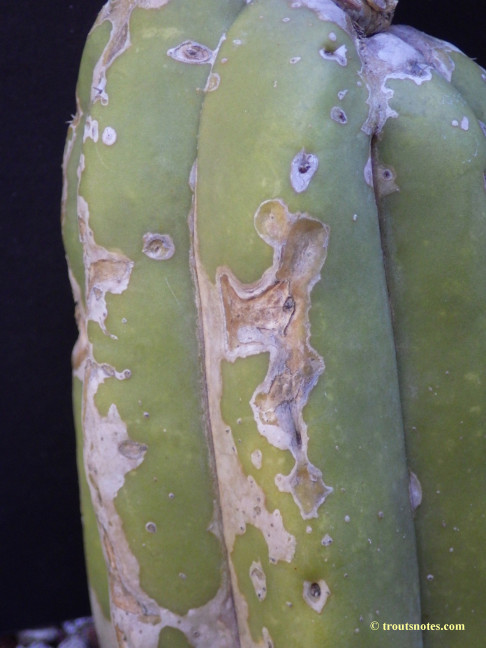Trichocereus aff. huanucoensis
A cutting was acquired from the Huntington some years ago thanks to the kindness and generosity of Gary Lyons. As soon as growth permitted it was cut half and rooted.
The mother plant has lost its accession card (and therefore its data) but Jon Trager told me that, due to its accession number and placement in their garden, he suspected it may have been grown from seeds provided to HBG by Harry Johnson during the 1950s.
The plants of Johnson, Akers, Ritter and Hutchison which would have been described in a monograph in preparation on Trichocereus was completely derailed by Curt Backeberg’s deliberately rushed 1956 publication of the horribly flawed Backeberg & Rauh “Descriptiones Cactacearum novarum“. Backeberg’s apparent motivation was in scooping them and he was criticized loudly by Myron Kimnach for doing so. In a review (quoted farther below) Kimnach comments: “[…] the customary low quality of Backeberg’s work sinks to a grotesque level [..] he has employed questionable ethics in publishing a number of Rauh’s collections which he knew had been collected earlier by Johnson, Ritter and Akers and which he also knew the latter were planning to publish.” (Backeberg’s response to a friend was quoted to be “I must require that my special and unusual method is consented.”)
This one, however, appears to me to be a rather typical T. pachanoi as might come from Peru.
A cutting that appears to be identical was sent to me by a correspondent who acquired his plant unlabelled many years earlier at the *truly amazing* California Cactus Center. This is one of my all-time favorite nurseries and is owned by some really nice people.
Interestingly, friends who were visiting Huanuco, Peru were unable to locate any pachanoi-peruvianus types in the area until Grizzly thought to explore the nearby wooded ravines. Images of his finds from near Huanuco can be viewed in Cactus Chemistry By Species.
Kimnach’s review of the 1956 ‘Descriptiones Cactacearum Novarum I‘ appeared in the 1957 Cactus & Succulent Journal of America 29: 146.
“The work will probably always be regarded as a curiosity of botanical literature, for here the customary low quality of Backeberg’s work sinks to a grotesque level. Indeed, it could well be used as a classroom example of what the conscientious taxonomist should avoid in his own work. In the first place he has employed questionable ethics in publishing a number of
Rauh’s collections which he knew had been collected earlier by Johnson, Ritter and Akers and which he also knew the latter were planning to publish. Secondly he seems to have described every minor variation so that for example we are confronted with some 20 new Haageocereus species from one river-valley in Peru! The descriptions are ridiculously short and he fails to mention how the new species differ from one another and from older species. The result is that practically none of his new taxa are established as being actually distinct.
“It can be imagined what the effect of these 200 newly published, but inadequately distinguished, species will be on the revision of Peruvian cacti now in progress by different workers. Their task has been difficult at best, due to the amateurish manner in which most of the older species were published. Now that confusion, for which Backeberg was also largely responsible, has been fantastically multiplied.”
The outcome of Backberg’s shenanigans was that the revision that was then underway in the hands of far more competent botanists was abandoned by those workers. Very little remains as evidence outside of Hutchison’s herbarium voucher sheets for Trichocereus huanucoensis.

